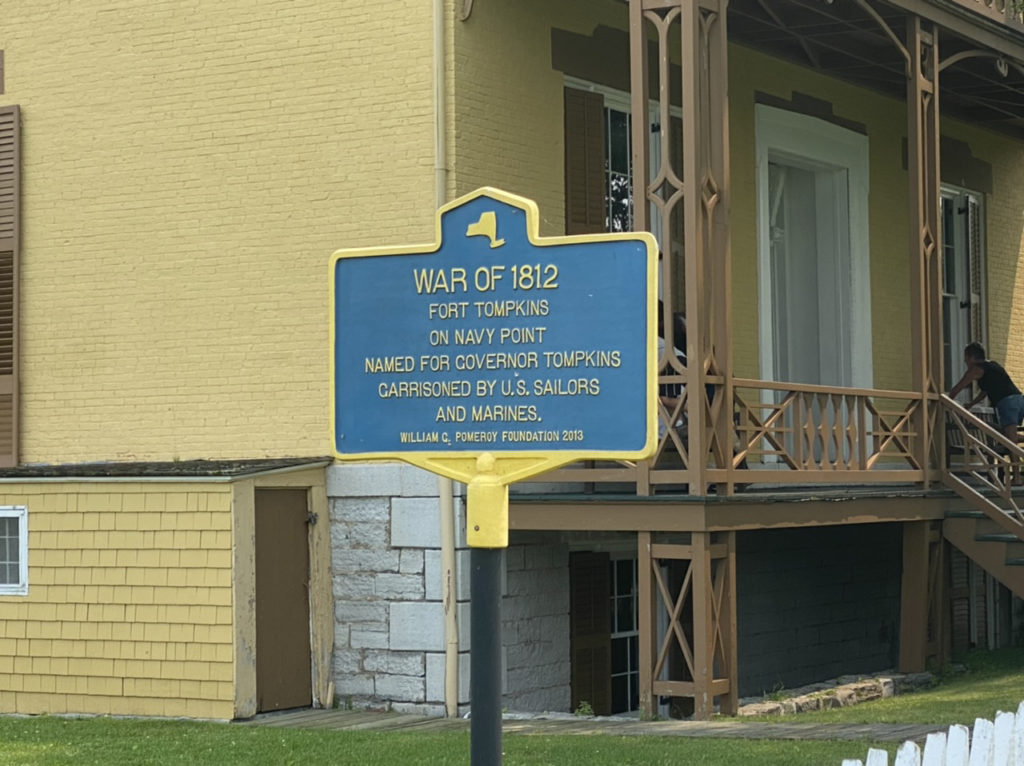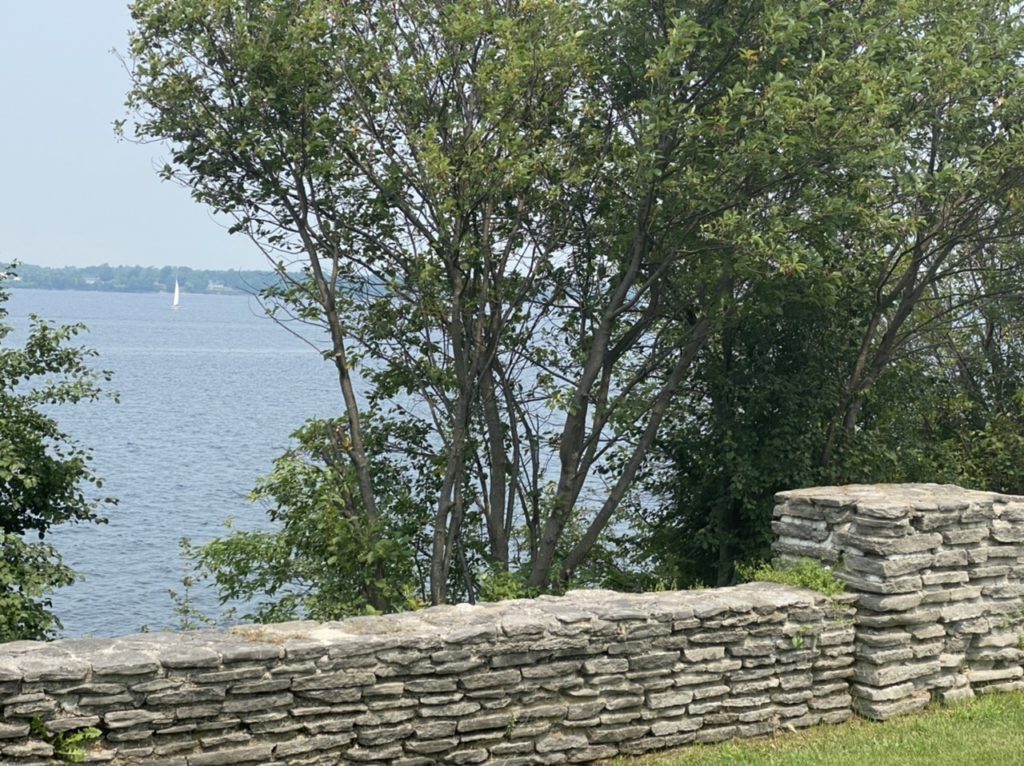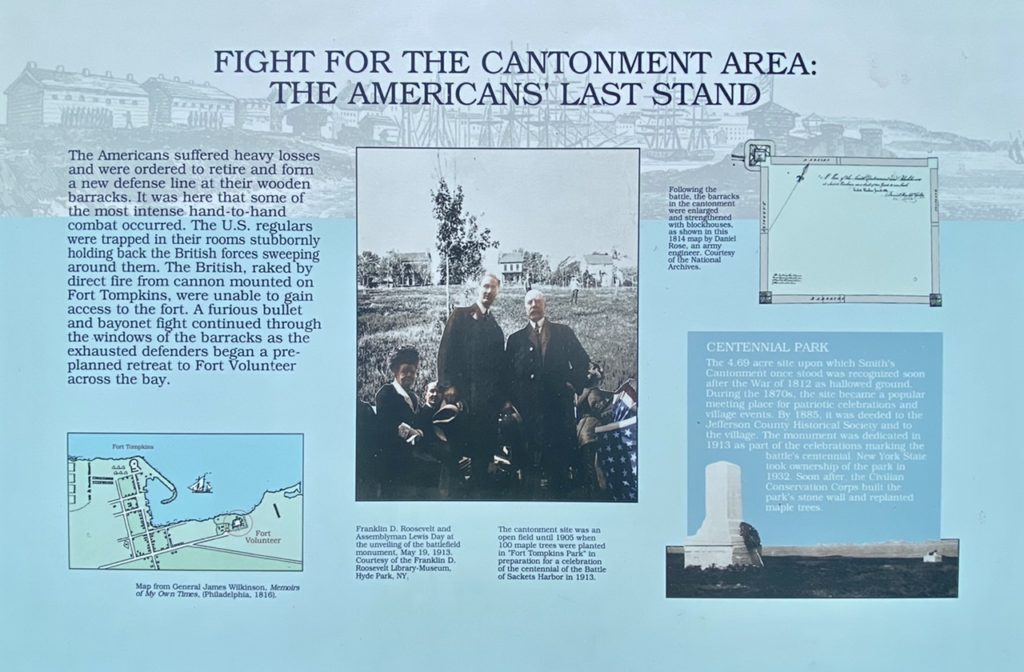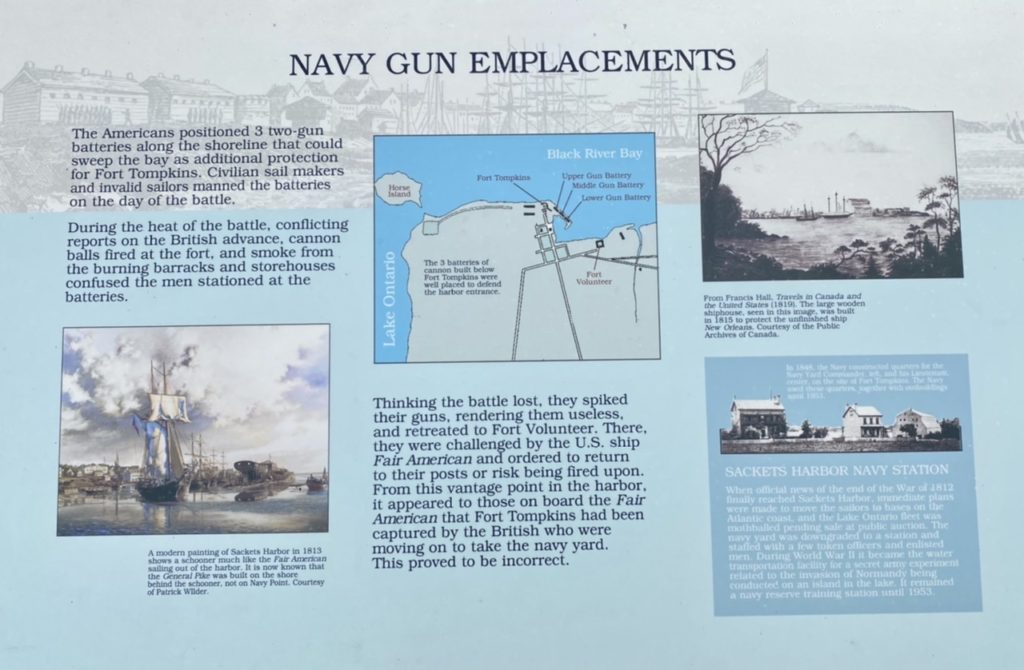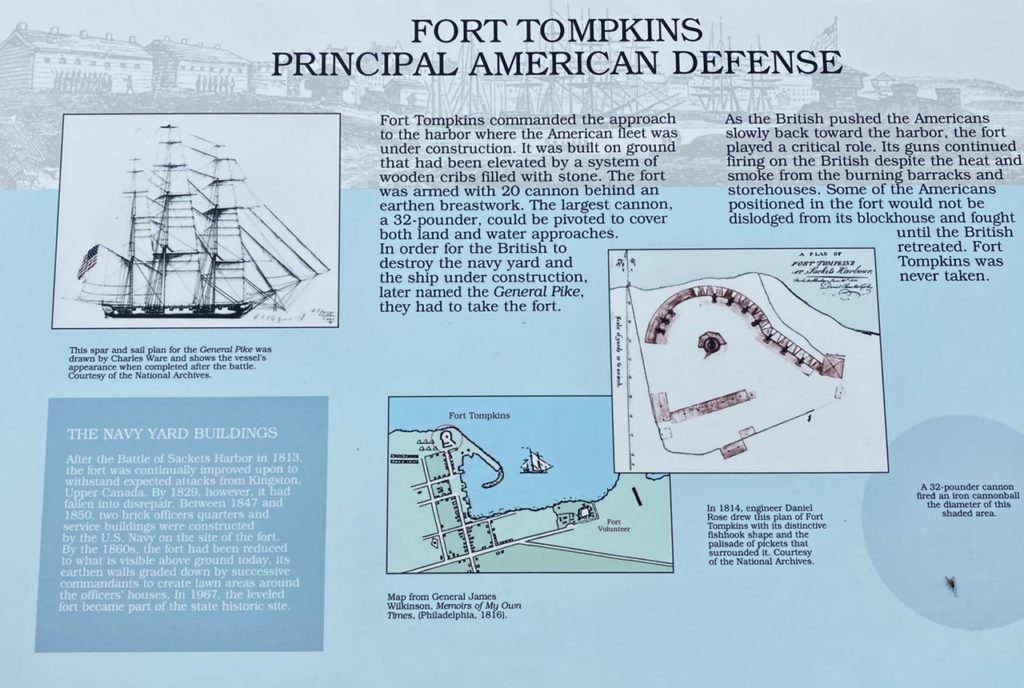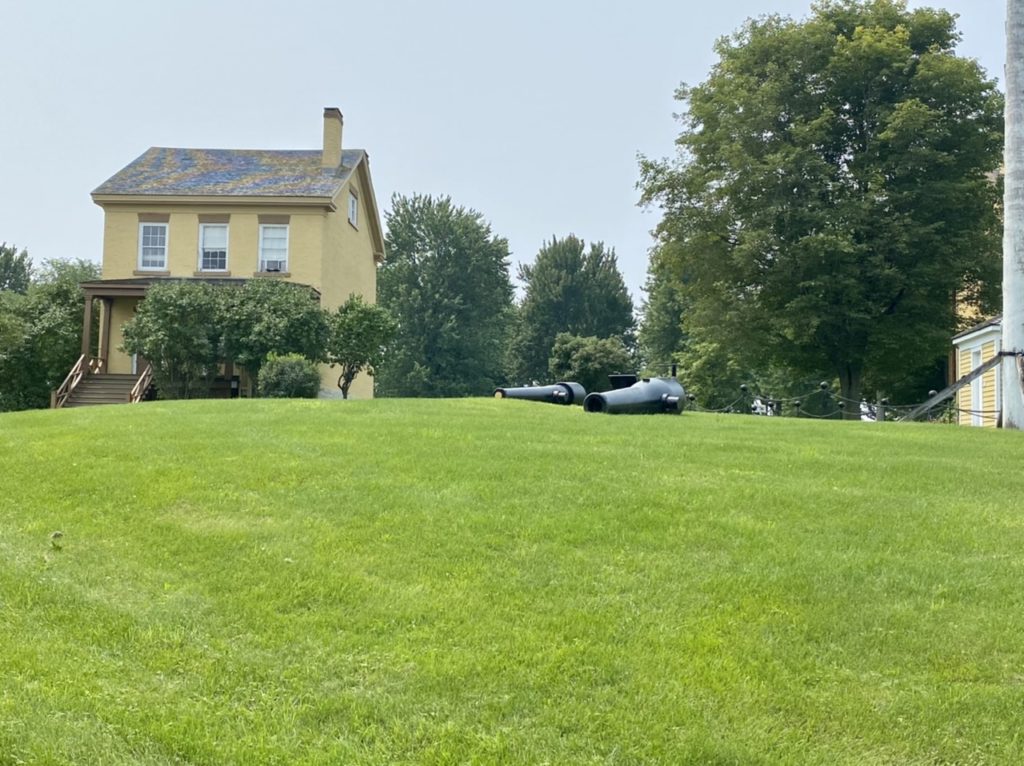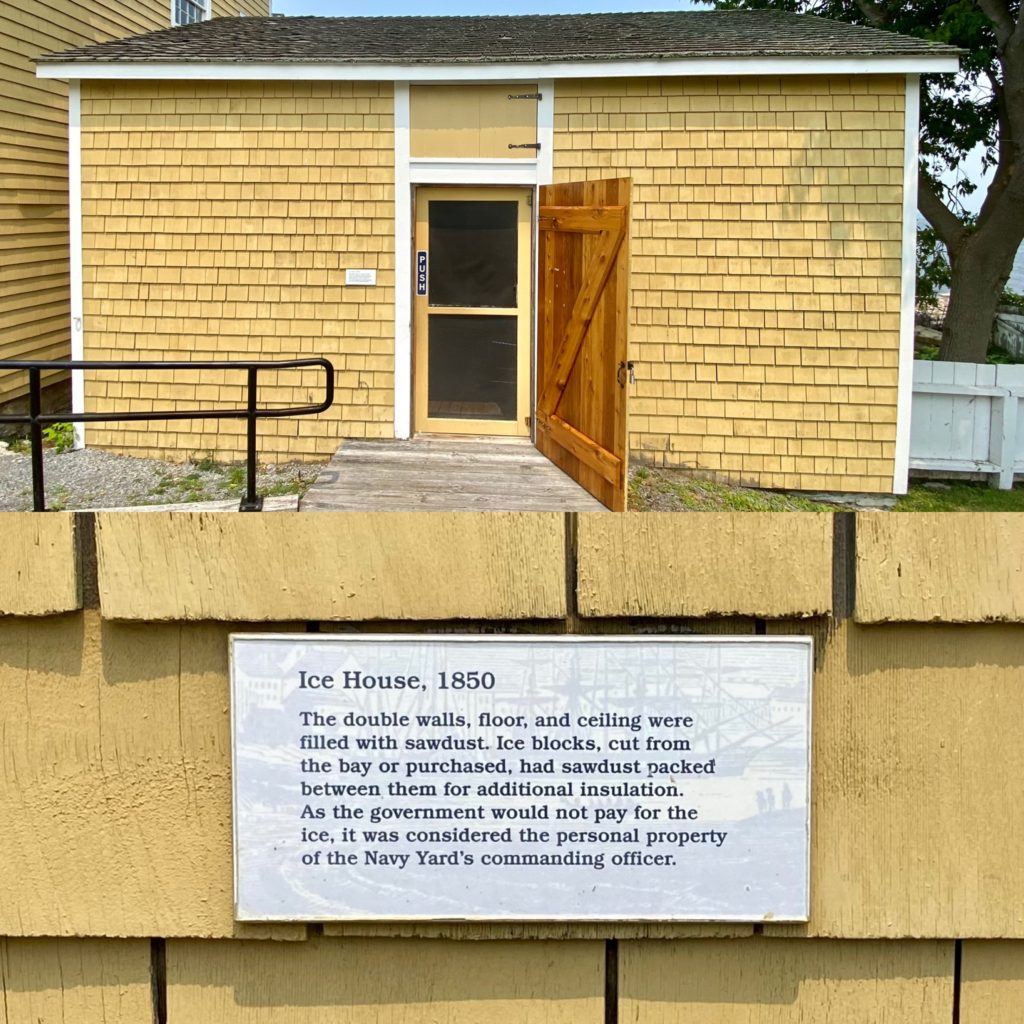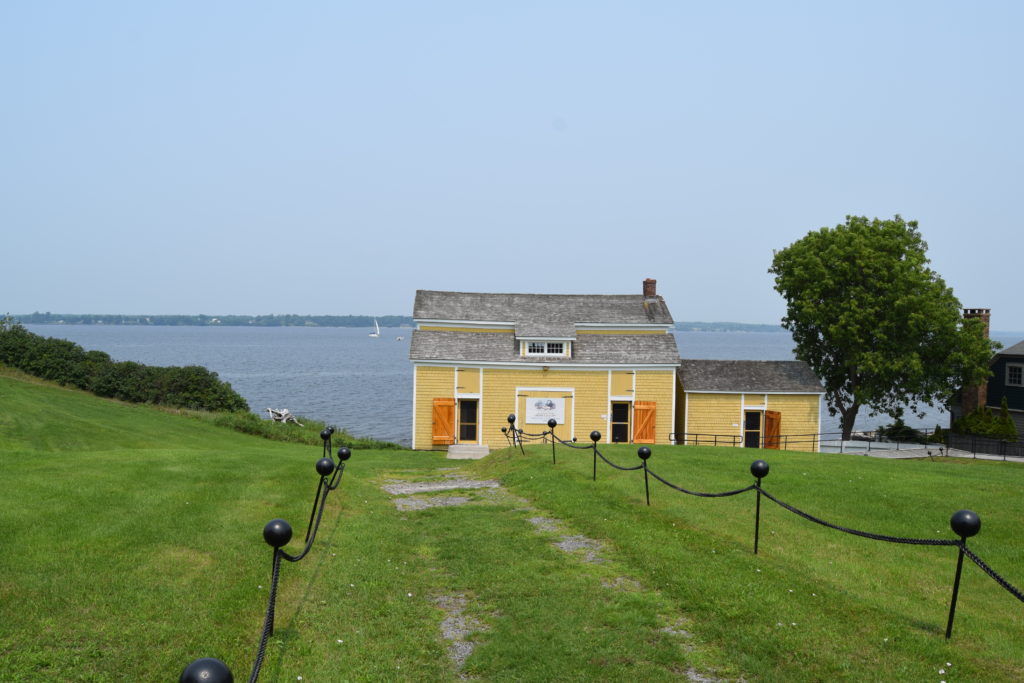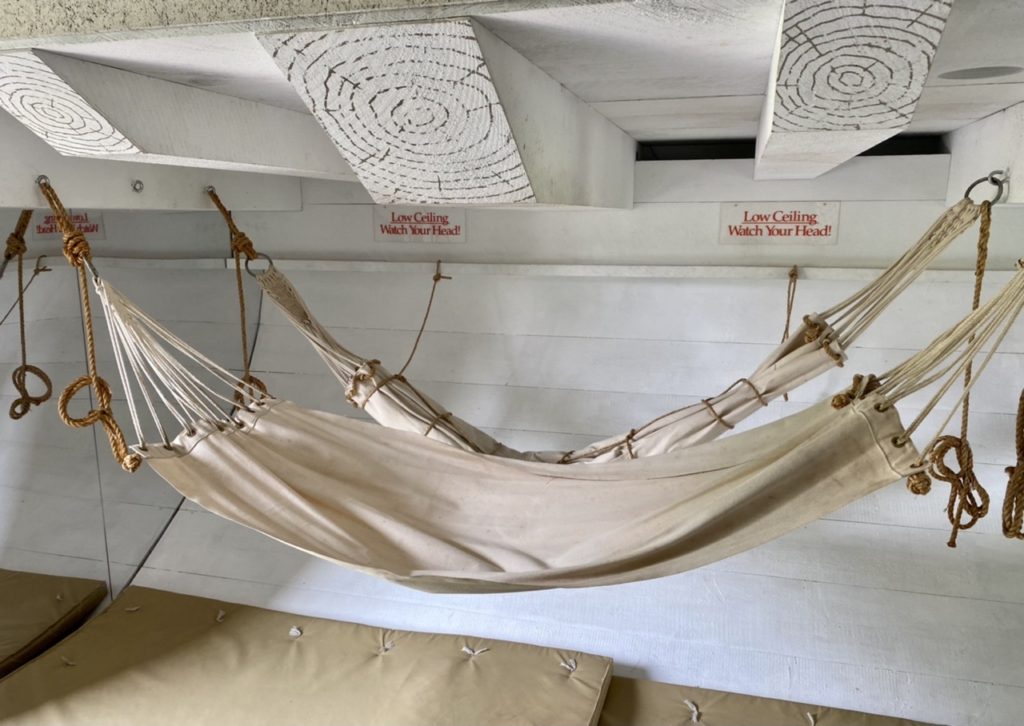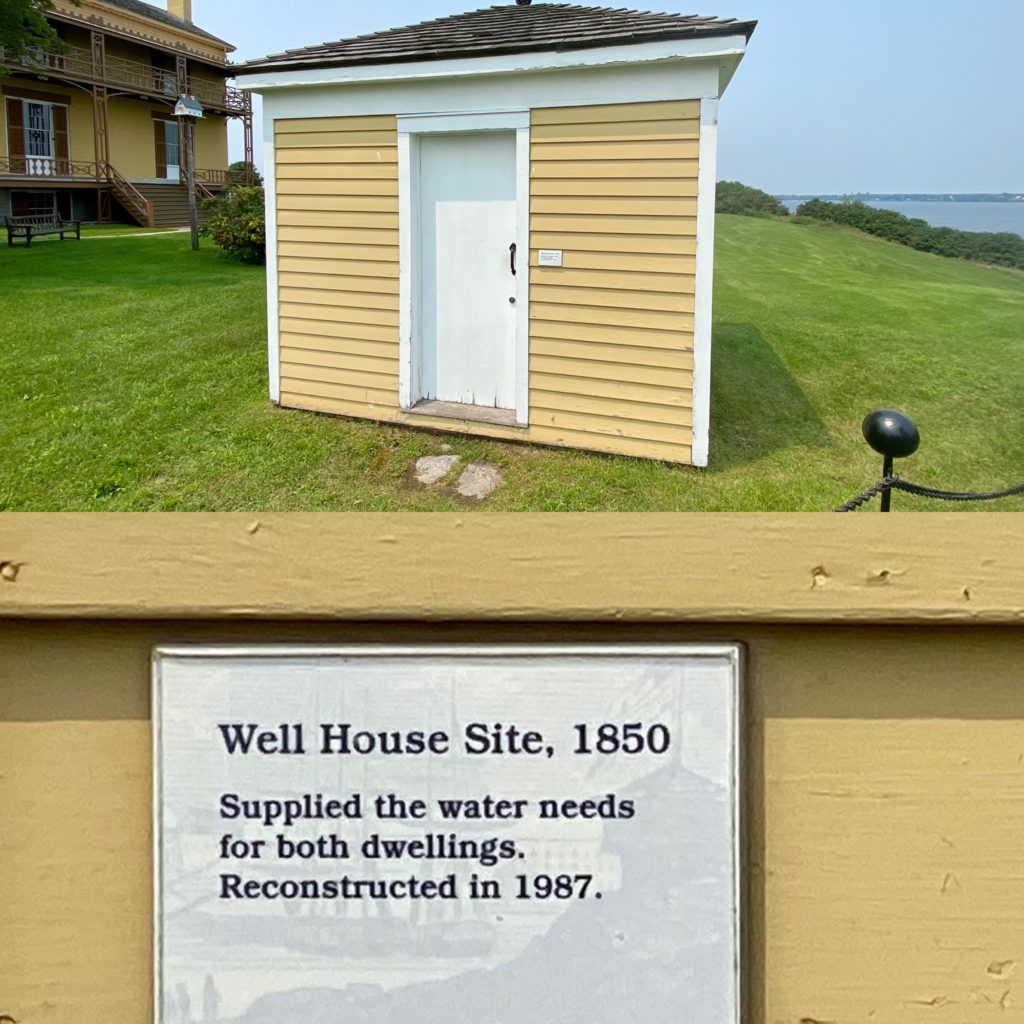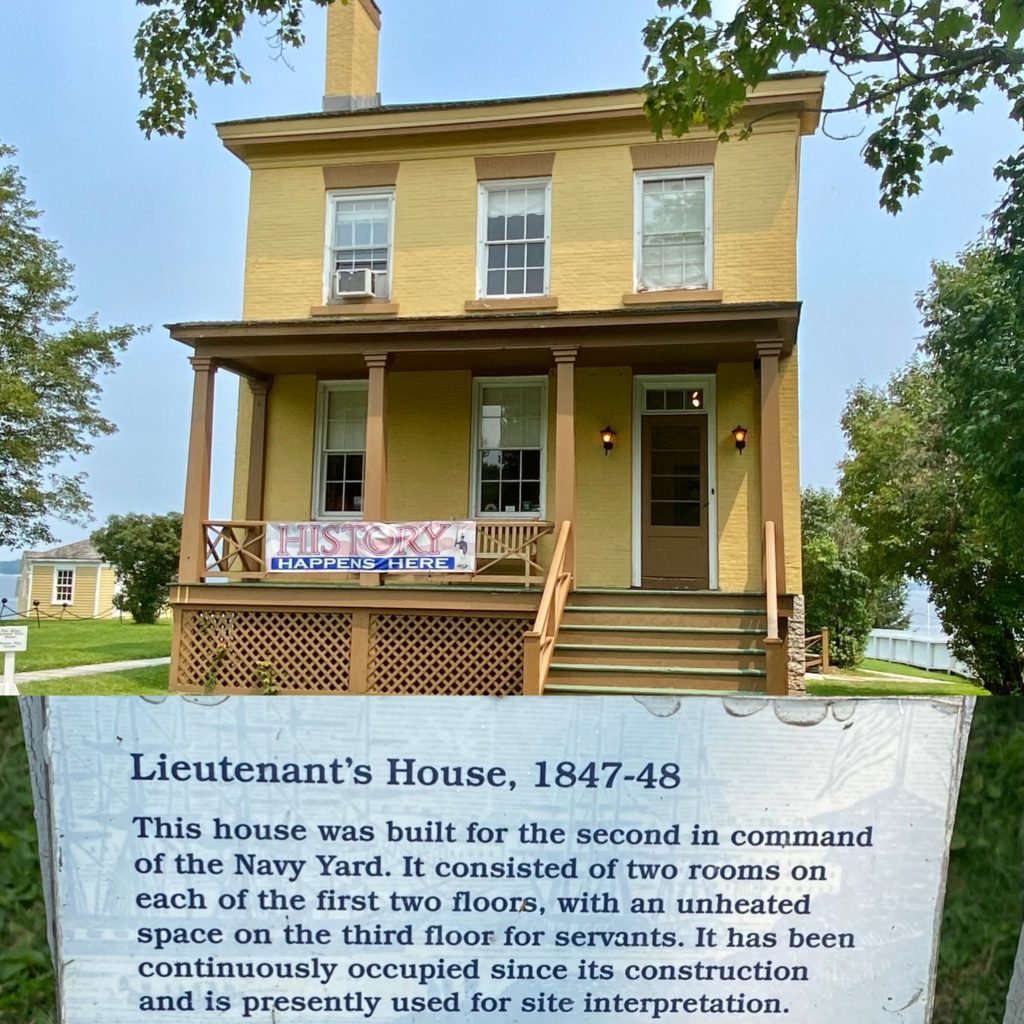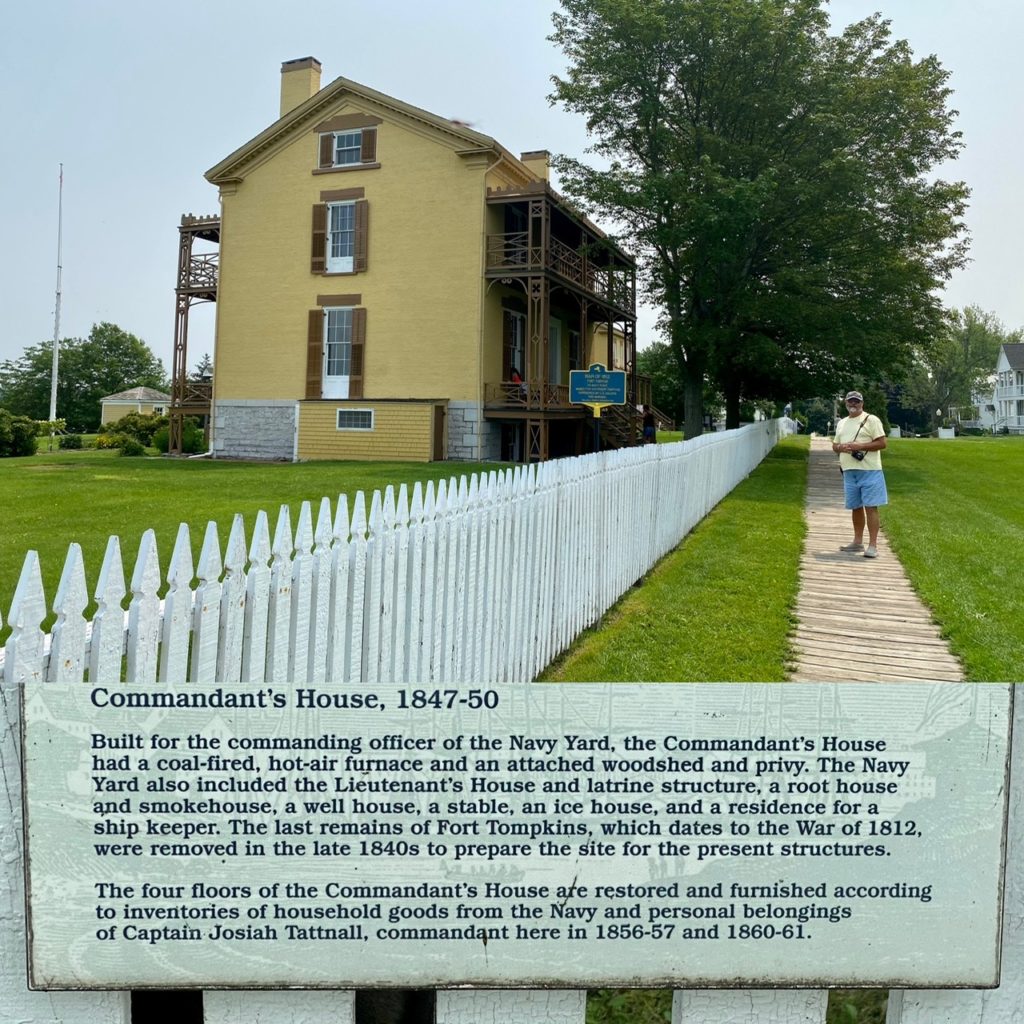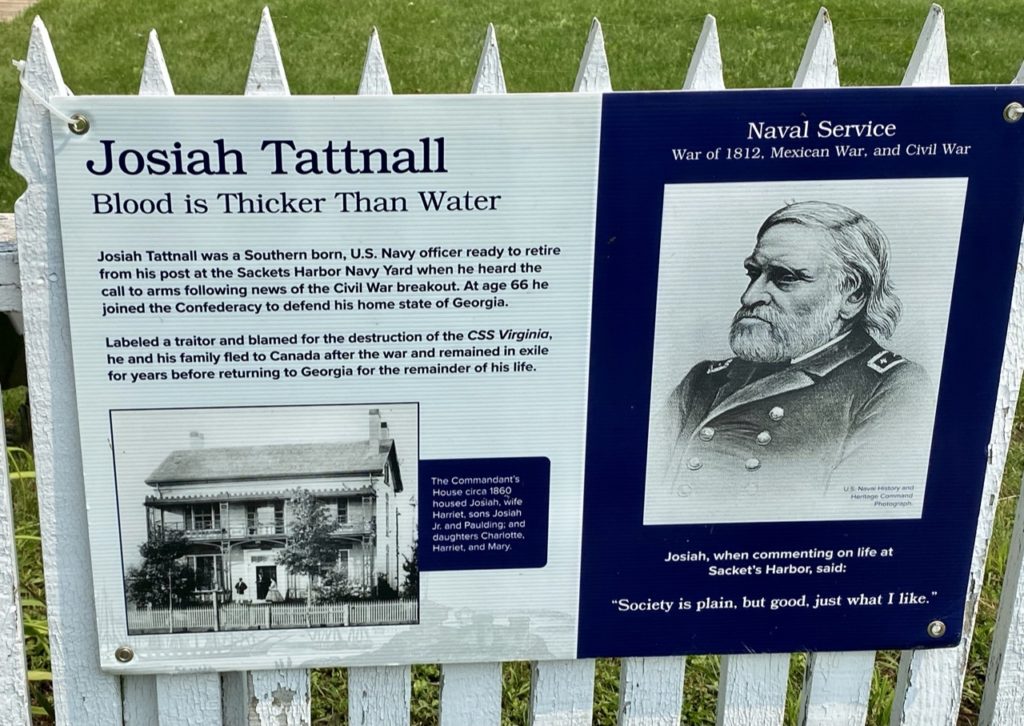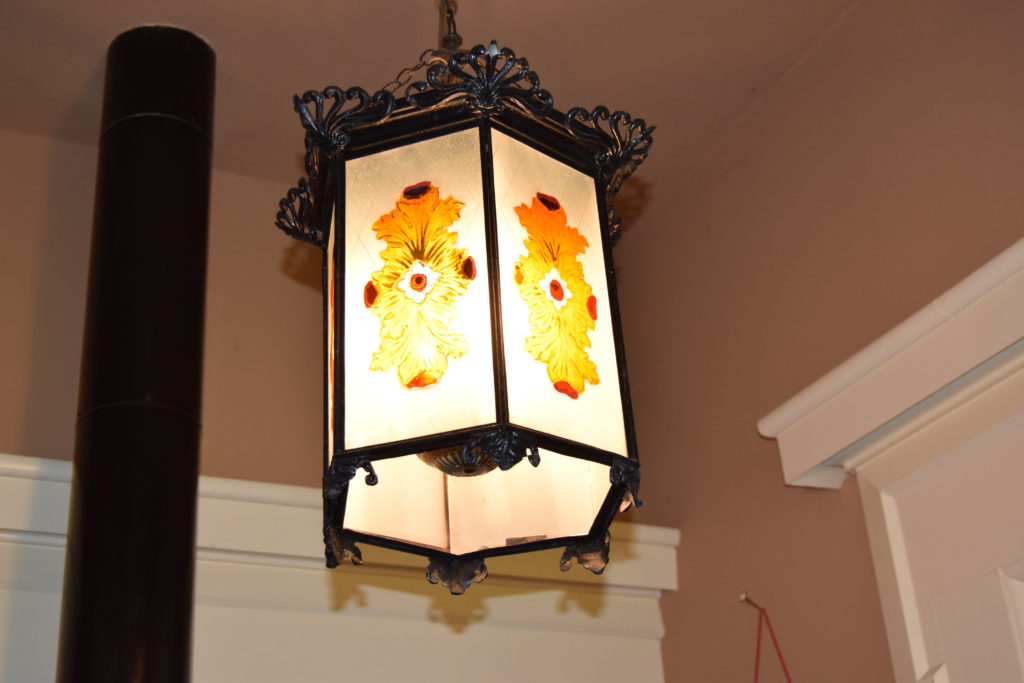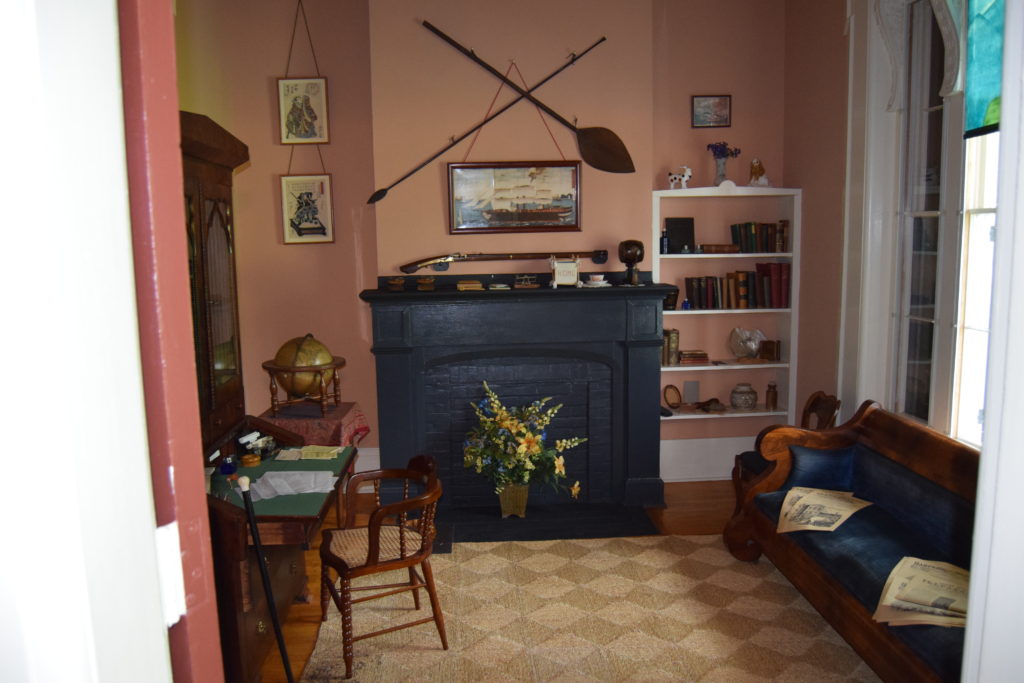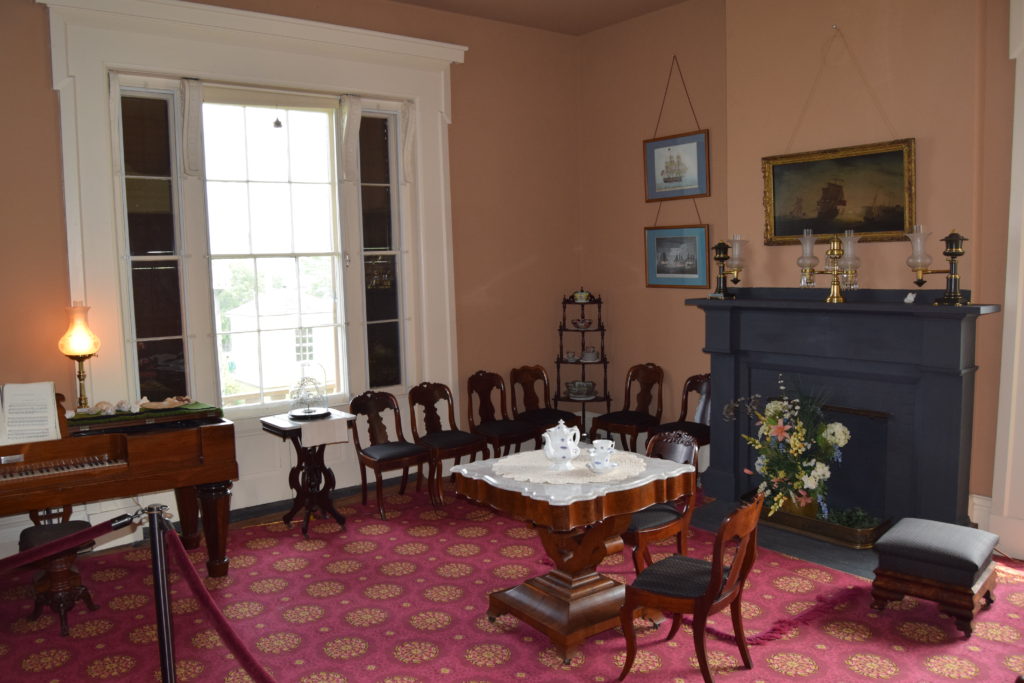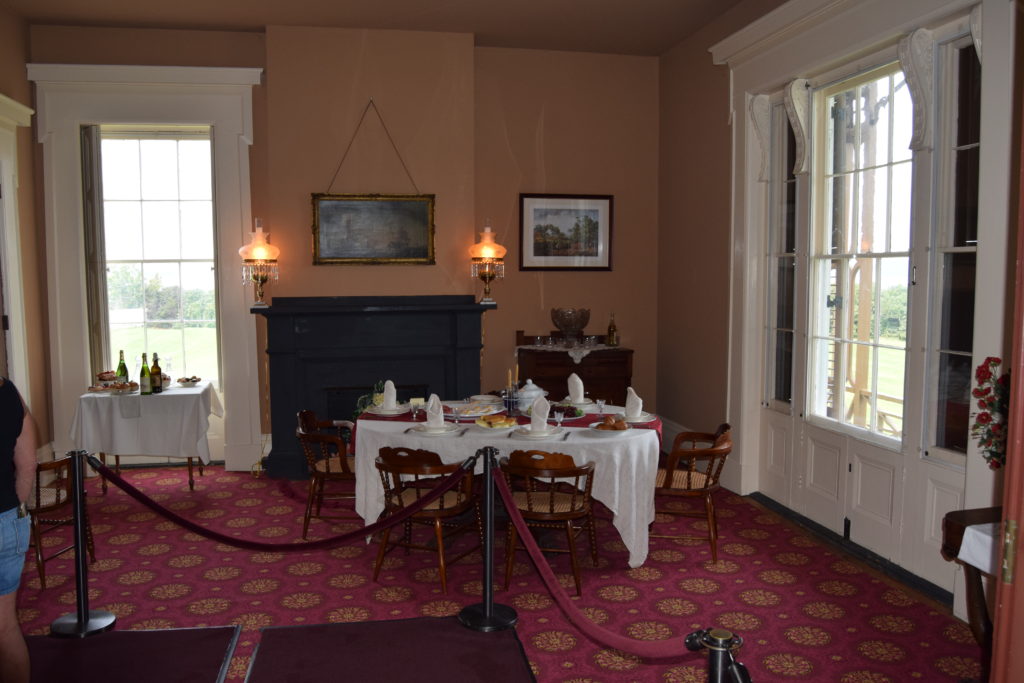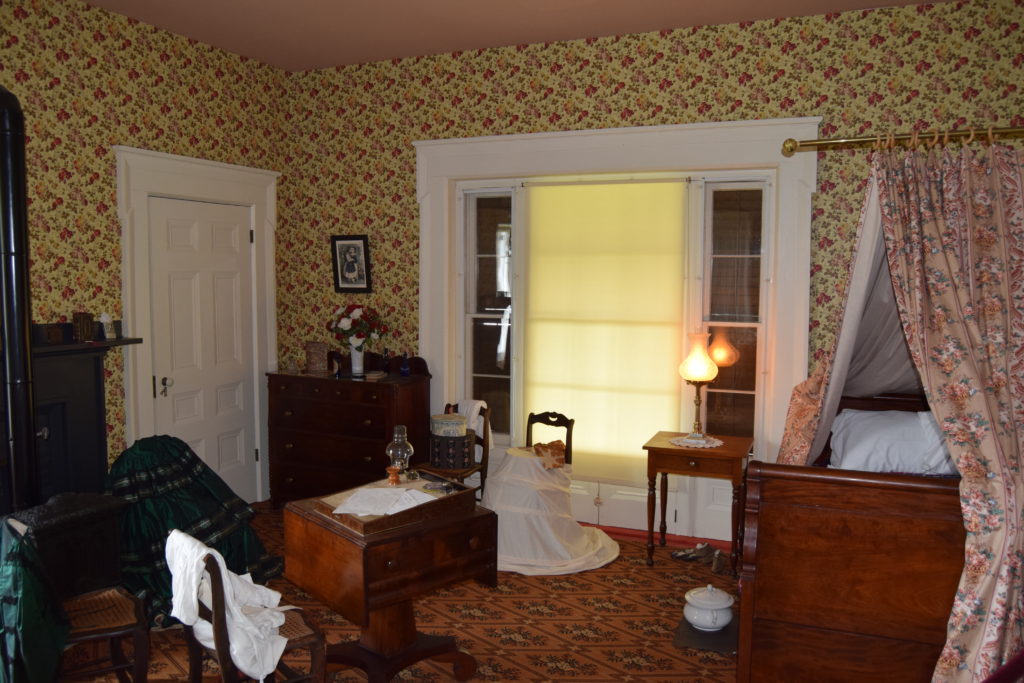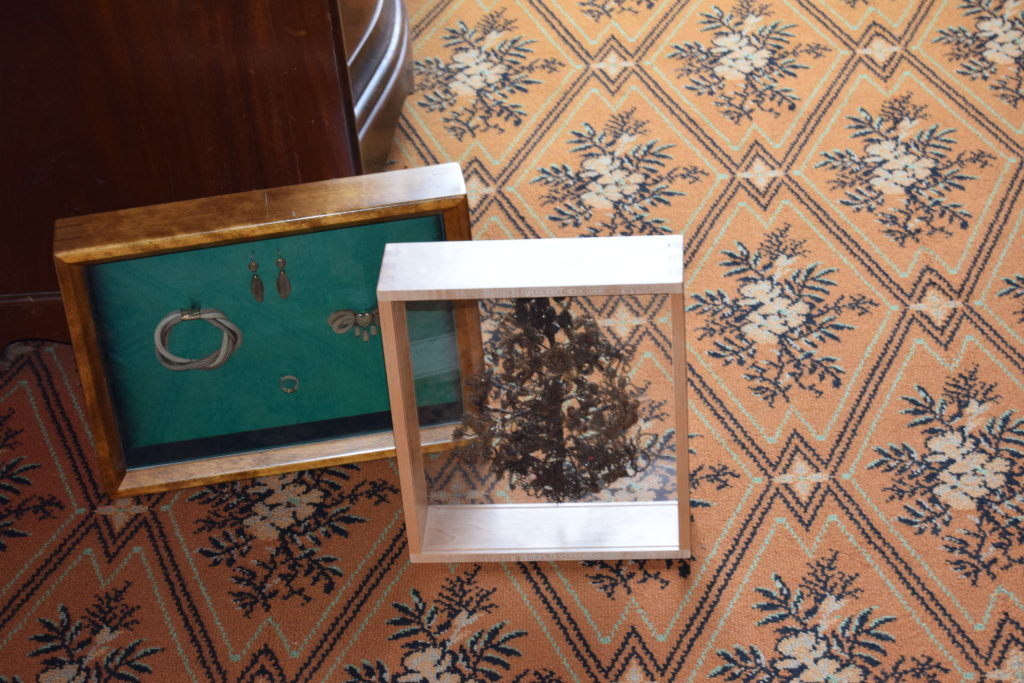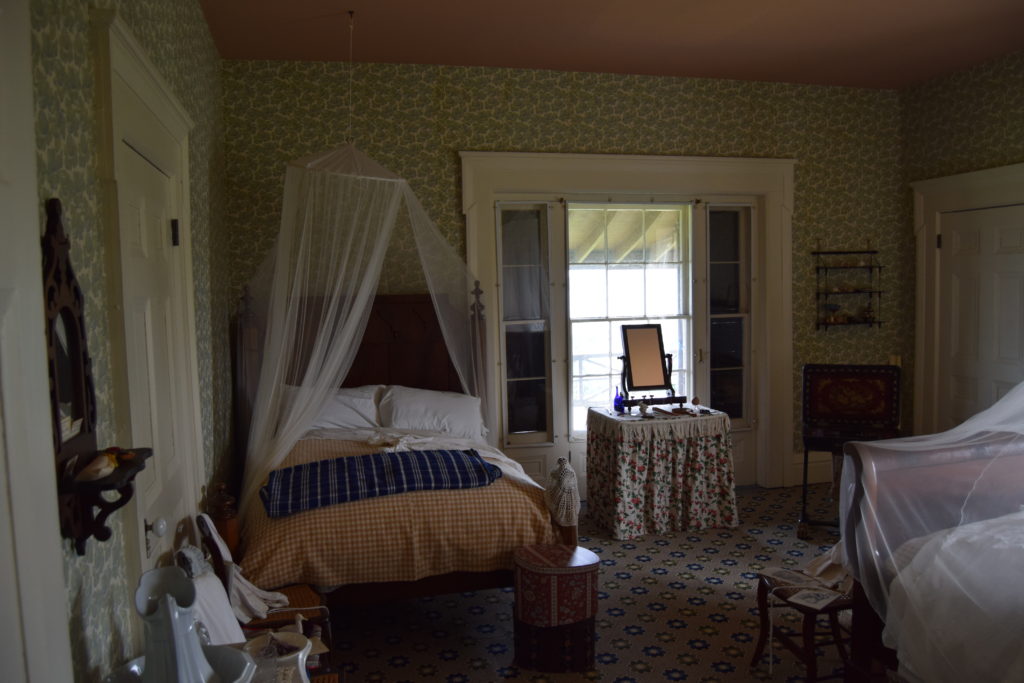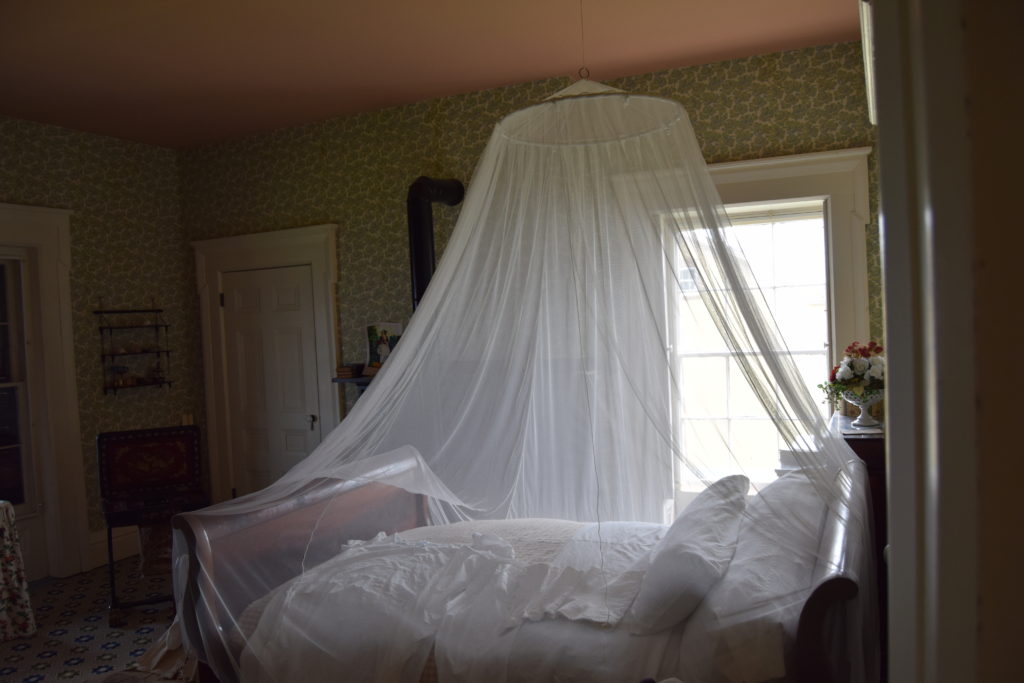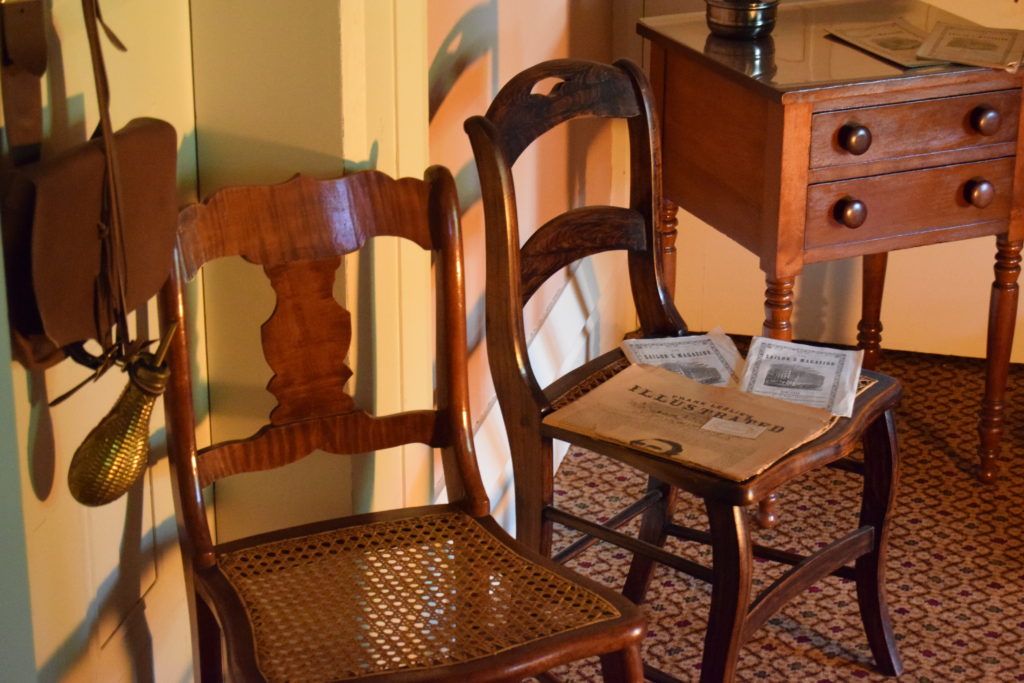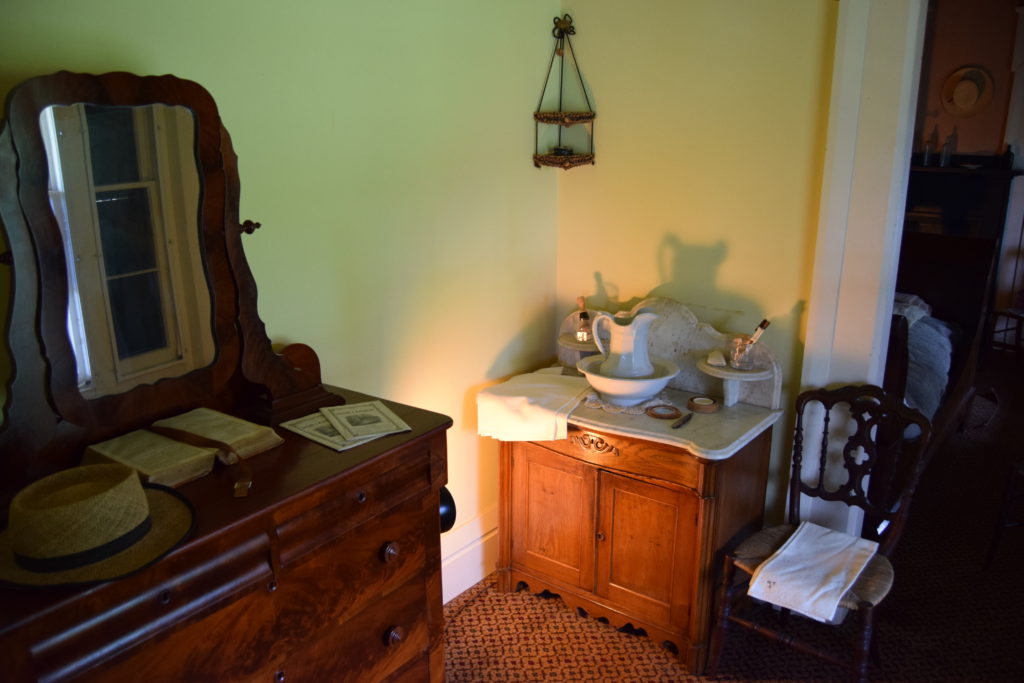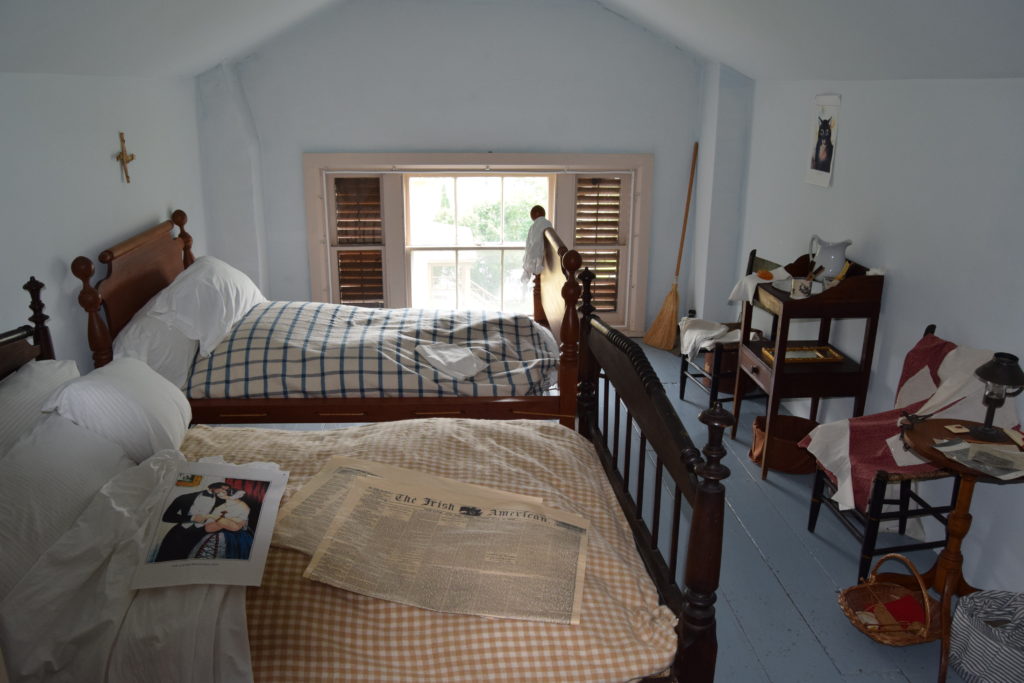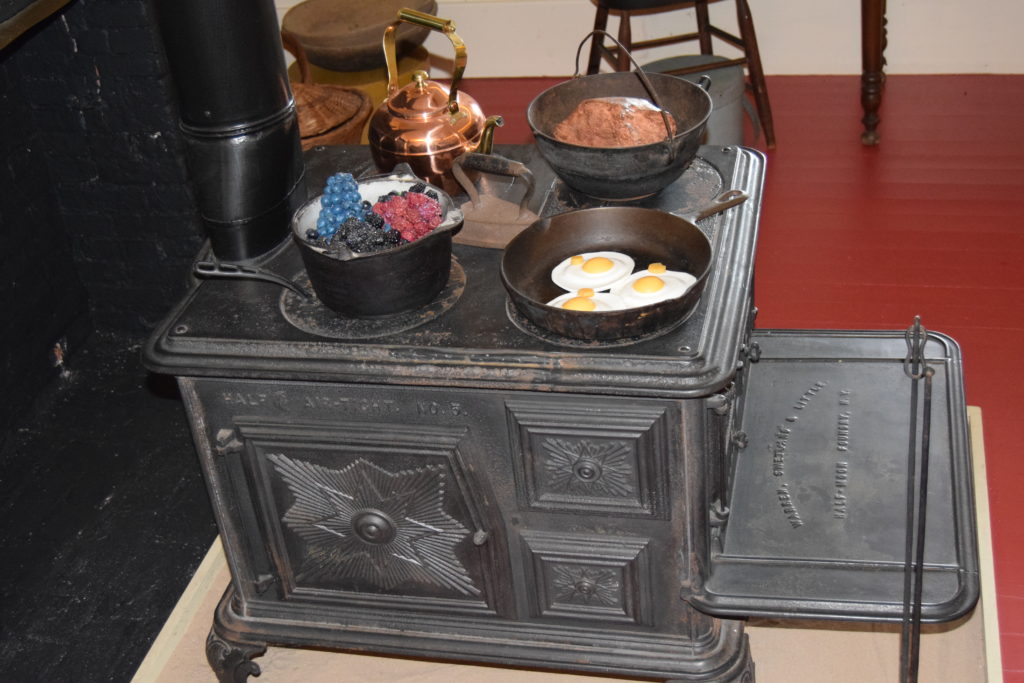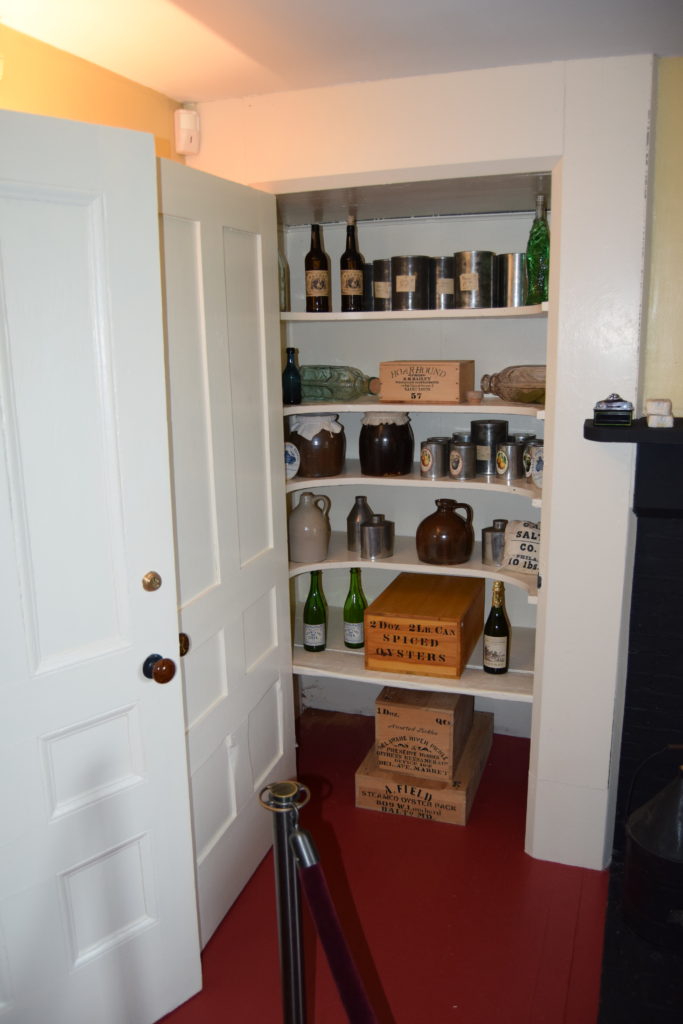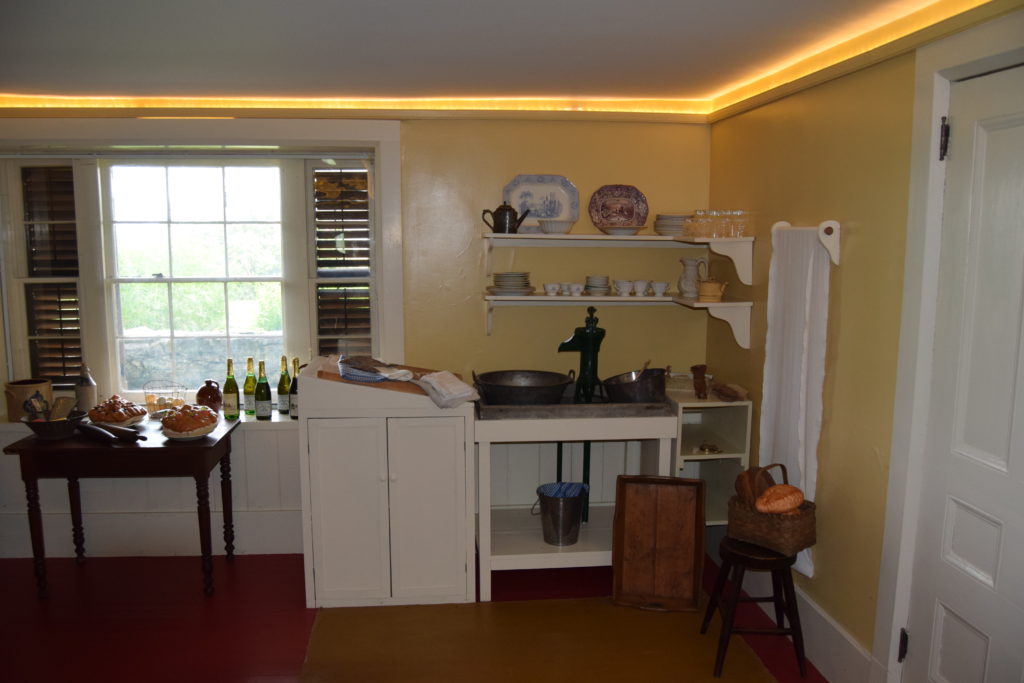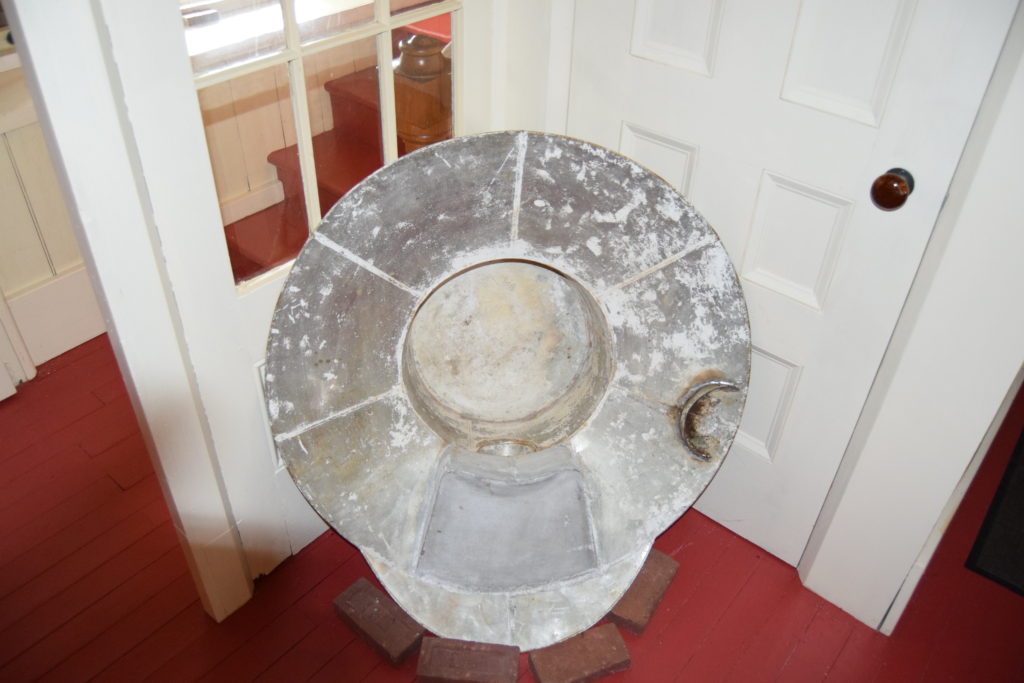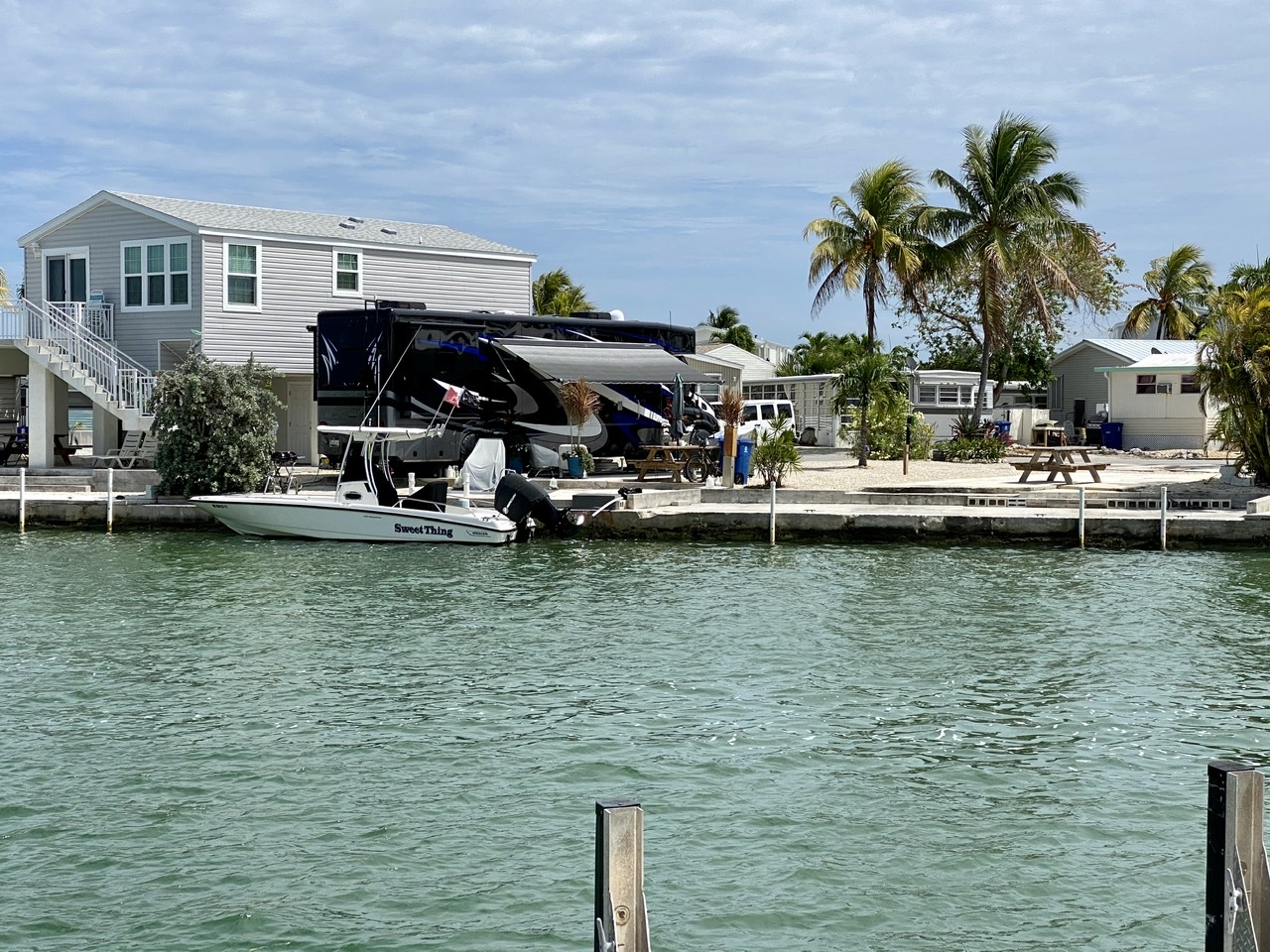It was not what we planned for the day, but when we were driving near Sackets Harbor, I convinced Randy to stop so we could explore the Sackets Harbor Battlefield State Historic Site. The grounds and views were gorgeous, the self-guided tour was informative and the tour guide did an awesome job explaining what life was like for the Commandant, his family and servants living in the house prior to the Civil War.
Commdandant Josiah Tattnall was an honored veteran of many battles including the War of 1812. He was living in (for the time) luxurious accommodations. The guide described his lifestyle as probably in the top 1 percent of luxury. Even the two 16 year old Irish girls that were servants, were paid more money that most men labourers. They were hired from London and paid wages that they were earning there, which were higher than in New York. According to the guide, they sent most of their money home to their father since all food, room and board were provided. But their life was still one of servitude. One story the guide told us was about both girls receiving a beating for one of them stepping on the carpet in the dining room instead of waiting in the pantry for Mrs. Tattnall to retrieve the dinner. Its bad enough one girl was punished for something as trivial as stepping on the carpet, but for both girls to receive a beating seems harsh. It may have been a very strict household, as the oldest son enlisted in the military and lived only 2 blocks away, but never visited after he joined the military. These stories were known because of letters and journals found.
As a history nerd, I was hooked when the guide told us about Commandant Josiah Tattnall’s military career; especially when I could relate it to other tours that Randy and I have been on. Nearing retirement, Commandant Josiah Tattnall resigned his commission to become an officer for the Confideracy. Tattnall received a commission as a captain of the Confederate navy; eventually as the Confederate commander of the C.S.S. Virginia. Fearing that the Virginia would be captured by Union forces when Southern forces planned to retreat from Norfolk, Virginia, Tattnall ordered the Virginia destroyed. He was censured by a board of inquiry for his destruction of the Virginia to prevent its capture by Union forces. He was later exonerated by a court martial. After the Civil War, Tattnall lived in Canada for a few years before returning to his home state of Georgia. According to the tour guide, he died destitute, a far cry from his earlier lifestyle.
What I did not realize until the guide started talking about the Battle of the Ironclads, also known as the Battle of the Monitor and the Merrimack, was the C.S.S. Virginia is more commonly known as the U.S.S. Merrimack. The C.S.S. Virginia was constructed as an ironclad using the scuttled hull of the Union steam frigate, U.S.S. Merrimack. Randy and I learned a lot about the Battle of Hampton Roads, the first battle between ironclads during the Civil War, during our museum tours when we would travel in our boat, Liberty to the Norfolk, Hampton and Newport News area.
I am glad we changed our plans to view this historic site. It makes we want to go back on the next day they do reenactments. I am such a history junkie!

